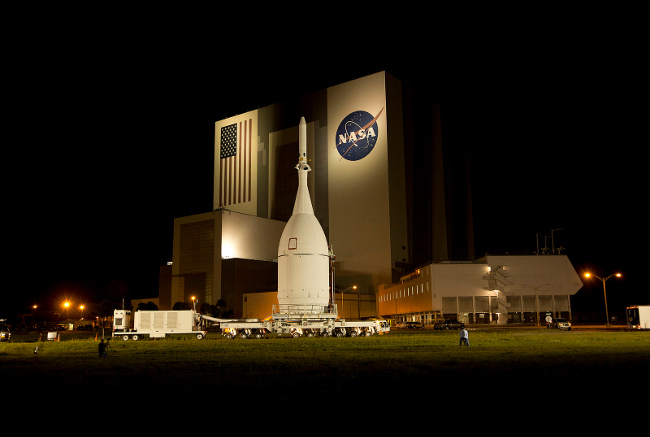This article is more than 1 year old
Orion: To Mars, the Moon and beyond... but first, a test flight through Van Allen belt
With handy 'any-time abort' should a KERPLUNK occur
The radiation conundrum
Orion’s ETF-1 (experimental test flight) is heading for a highly elliptical orbit, not just to work up the speed to hit the atmosphere at close to the same velocity and temperature as a return trip from the Moon, but also so that it can punch through the lower Van Allen radiation belt.

Figuring out how to protect astronauts, and all the highly sensitive electronics on a spacecraft, from the effects of radiation outside our cosy little protective belt of highly energetic charged particles is crucial to any hope of deep space exploration by humans. And Orion is not there yet.
“The design of the vehicle is such that we start with simpler pieces in the beginning, but everything is designed to extend into what the next flights would be,” Price said.
“So even in the early stages of this vehicle, we’ve architected it to have as much natural shielding from the structure and the components that are inside, to protect the crew and the sensitive electronics for not just the thermal environment of re-entry, but also micro-meteoroid debris - small particles that are orbiting around the Earth and in the interstellar space - and also radiation.
“It’s a system design challenge to try to minimise the mass of the vehicle while sharing as much of the shielding capabilities as you can. We don’t know much about radiation shielding and protecting humans, frankly, but we know that water and polyethylenes can protect for some events.”
Part of ETF-1’s mission is to try to come up with some answers on how well Orion’s initial shielding does against the radiation and what the next steps might be.
Despite admitting that there’s a long way to go before Orion can safely transport humans outside the Van Allen belts, Price is confident that the craft is one that will make it all the way to Mars.
“I definitely think that Orion will make it to Mars, it’s being designed to be able to do that,” he said.
“We’ll carry other things with us, like habitation modules, so that there’ll be large volumes for the astronauts to occupy during the nine month transit to Mars.
“But the advantage of being able to bring the Orion capsule with you is that if there’s any anomaly or an emergency and you have to cut the mission short and come back, you have got the re-entry vehicle with you so that you don’t need to architect a path around planets or accelerate around the Moon or land in an orbit around Earth to phase up with your entry vehicle. That’s why Orion is being designed the way it is, so that you can safely return during any part of the mission - they call it “any-time abort”.
NASA is planning that manned trip for 2021, after another unmanned test to the Moon in 2018. ETF-1 is blasting off with the help of a Delta IV Heavy rocket, but Lockheed is hoping that Orion will use NASA’s currently-in-development rocket, the Space Launch System (SLS), for the 2018 launch, as it will have the necessary propulsion for long distance travel.
First though, Orion has to make it through the test on Thursday. As well as trying out the heat shield and testing radiation exposure, Orion will also be testing each of its module separation systems, its launch abort system and its parachute deployment, among other systems.
A sequence of 11 parachutes deploy from Orion to give it enough drag to land safely in the Pacific Ocean, where NASA and the US Navy can pick it up, just four-and-a-half hours after its launch. Lift-off is currently scheduled for 7.05am ET (12.04pm GMT). ®
